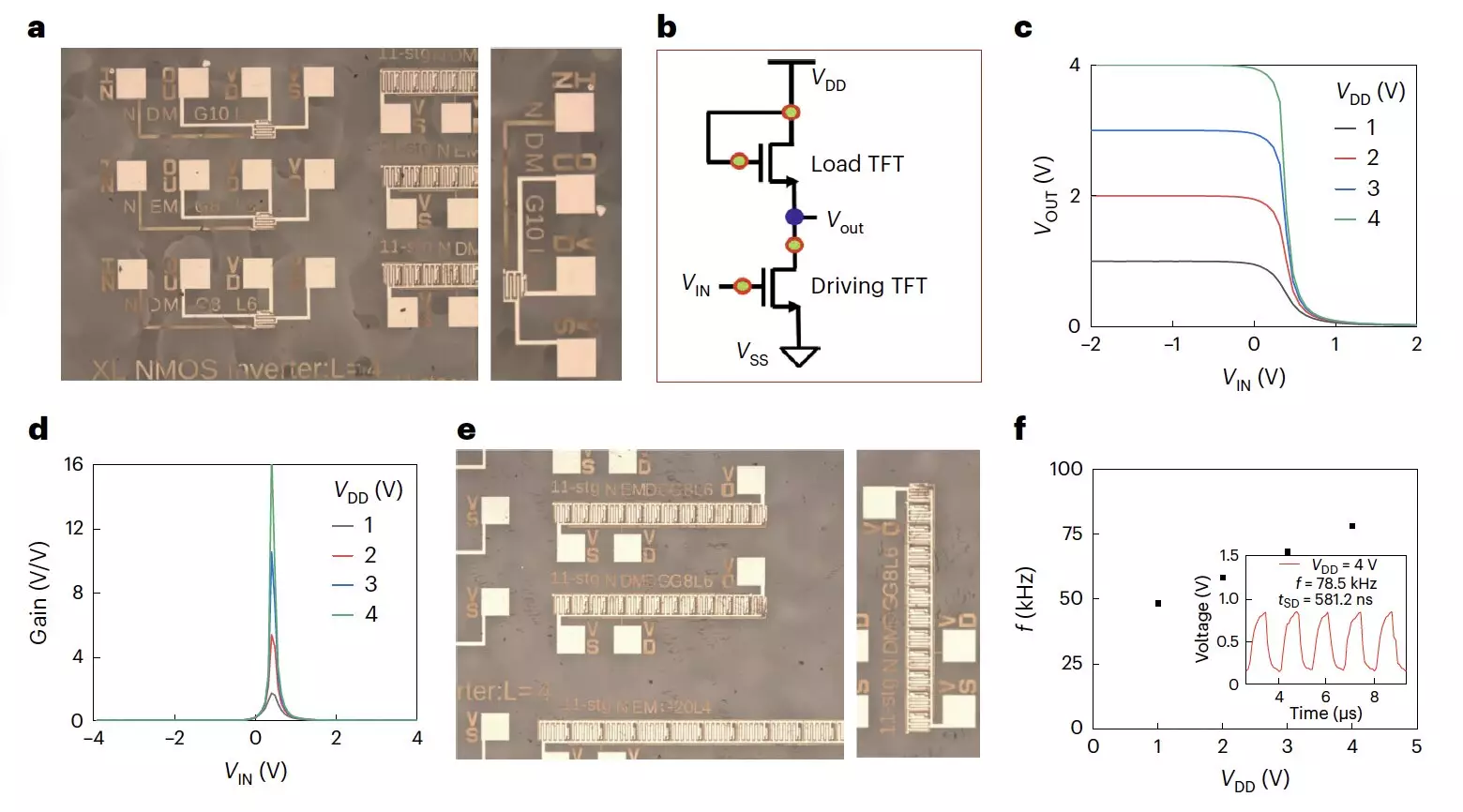Metal halide perovskites have emerged as a promising class of materials for thin-film transistors due to their exceptional optoelectronic properties. Among these, tin (Sn) halide perovskites have demonstrated the ability to create high-performance p-type transistors. However, the development of n-type transistors using tin-based perovskites remains a challenge, limiting the creation of complementary logic circuits.
Exploring Lead Halide Perovskites for N-Type Transistors
To address the limitations of tin halide perovskites for n-type transistors, researchers have turned to lead halide perovskites. Although lead halide perovskites show promise, their ionic defects have restricted the electron mobility of resulting transistors to a range of 3-4 cm2 V−1 s−1, hindering the development of high-performance n-type transistors.
Recent research efforts by institutions like the National Centre for Scientific Research Demokritos and EPFL have introduced an innovative approach to improve the performance of n-type transistors based on metal halide perovskites. By utilizing formamidinium lead iodide (FAPbI3) perovskite, researchers were able to fabricate n-type transistors with field-effect mobilities reaching up to 33 cm2 V−1 s−1.
To further enhance the performance of their n-type transistors, the research team incorporated a methylammonium chloride (MACI) additive. This additive played a crucial role in regulating the strain within the FAPbI3 perovskite, leading to improvements in various material properties.
Promising Results and Future Prospects
Initial tests of the enhanced n-type transistors demonstrated impressive characteristics such as high electron mobilities, minimal hysteresis, and exceptional operational stability under both negative and positive bias conditions. Furthermore, researchers successfully utilized these transistors to create all-perovskite unipolar inverters and complex 11-stage ring oscillators.
The use of metal halide perovskites for thin-film transistors, particularly in the development of n-type transistors, is a rapidly evolving field with significant potential for technological advancements. By leveraging innovative strategies and additives, researchers are pushing the boundaries of what is achievable with these materials, paving the way for the creation of highly efficient and cost-effective integrated circuits. As further tests and developments continue, metal halide perovskites could revolutionize the electronics industry and open up new possibilities for diverse applications in the near future.


Leave a Reply